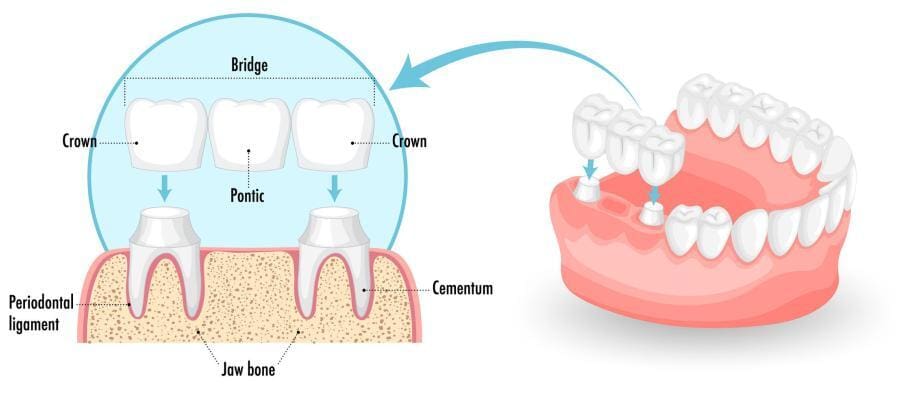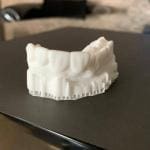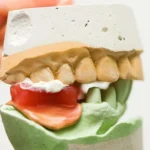A dental bridge is a common dental restoration procedure that is used to replace missing teeth. It is a permanent appliance that is anchored to existing teeth or dental implants, and is designed to match the appearance of natural teeth. Dental bridges are an effective solution for those who have lost one or more teeth due to injury, decay, or disease. In this article, we will explore what a dental bridge is, how it works, and the different types of dental bridges available.
What is a Dental Bridge?
A dental bridge is a fixed dental restoration that is used to replace one or more missing teeth. It is composed of two or more dental crowns that are anchored to existing teeth or dental implants. These crowns, also known as abutments, serve as the support for the bridge, while the replacement teeth, known as pontics, fill in the gaps left by the missing teeth.
Dental bridges are typically made of porcelain, ceramic, Zirconia or a combination of materials. They are designed to match the color, shape, and size of the natural teeth, and can provide a natural-looking and durable solution for those who have lost one or more teeth.
How Does a Dental Bridge Work?
A dental bridge works by anchoring the replacement teeth to existing teeth or dental implants. The procedure typically involves several steps, including:
- Examination and Preparation
- Impression
- Temporary Bridge
- Placement
Examination and Preparation
The dentist will examine the teeth and gums to determine if a dental bridge is the right solution for the patient. If it is, the dentist will prepare the abutment teeth by removing a portion of their enamel to make room for the crowns.
Impression
The dentist will take an impression of the teeth, which will be used to create a custom dental bridge.
Temporary Bridge
While the custom bridge is being made, the dentist will place a temporary bridge to protect the exposed teeth and gums.
Placement
Once the custom bridge is ready, the dentist will remove the temporary bridge and place the custom bridge in the patient’s mouth. The dentist will then adjust the bridge to ensure a proper fit.
Types of Dental Bridges
There are several types of dental bridges available, each with its own benefits and drawbacks. The most common types of dental bridges include:
- Traditional Bridge
- Cantilever Bridge
- Maryland Bridge
- Implant-Supported Bridge
Traditional Bridge
A traditional bridge is the most common type of dental bridge. It consists of two dental crowns that are anchored to existing teeth or dental implants, with one or more replacement teeth in between.
Cantilever Bridge
A cantilever bridge is similar to a traditional bridge, but it is anchored to only one tooth or implant. This type of bridge is typically used for teeth that are not under heavy biting or chewing pressure.
Maryland Bridge
A Maryland bridge, also known as a resin-bonded bridge, is anchored to the back of the adjacent teeth using a metal or porcelain framework. This type of bridge is less invasive than a traditional bridge, but it may not be as durable.
Implant-Supported Bridge
An implant-supported bridge is anchored to dental implants that are surgically placed in the jawbone. This type of bridge is typically used for patients who have multiple missing teeth or who do not have strong enough abutment teeth to support a traditional bridge.
Benefits of Dental Bridges
Dental bridges offer several benefits for those who have lost one or more teeth, including:
- Improved Appearance
- Better Chewing and Speaking
- Improved Dental Health
- Durability
- Cost-Effective
Improved Appearance
Dental bridges can improve the appearance of the smile by filling in gaps left by missing teeth.
Better Chewing and Speaking
Dental bridges can restore the ability to chew and speak properly, which can improve overall quality of life.
Improved Dental Health
Dental bridges can prevent the remaining teeth from shifting out of place, which can lead to bite problems, gum disease, and other dental health issues.
Durability
Dental bridges are durable and can last for many years with proper care and maintenance.
Cost-Effective
Dental bridges are often more cost-effective than other dental restoration options, such as dental implants.
Risks and Considerations
While dental bridges are a safe and effective dental restoration option for most patients, there are some risks and considerations to keep in mind. These include:
- Reduced Tooth Structure
- Decay
- Bite Problems
- Gum Disease
- Incompatibility with Certain Habits
Reduced Tooth Structure
The preparation of the abutment teeth for the dental crowns can result in a reduction in tooth structure, which may weaken the teeth.
Decay
Dental bridges can be prone to decay and may require additional maintenance to prevent decay from developing around the margins of the crowns.
Bite Problems
If the dental bridge is not properly fitted or adjusted, it can lead to bite problems and discomfort.
Gum Disease
Poor oral hygiene can lead to gum disease around the abutment teeth, which can compromise the stability of the dental bridge.
Incompatibility with Certain Habits
Patients who grind their teeth or clench their jaws may not be good candidates for dental bridges, as these habits can place excessive pressure on the abutment teeth and the bridge.
Conclusion
Dental bridges are a common and effective dental restoration option for those who have lost one or more teeth. They offer several benefits, including improved appearance, better chewing and speaking, improved dental health, durability, and cost-effectiveness. However, they also come with some risks and considerations, and may not be the best option for all patients. If you are considering a dental bridge, it is important to discuss the benefits and risks with your dentist to determine if it is the right option for you.






Luke Smith
20 June 2023I like that you pointed out how dental bridges could improve the appearance of the smile by filling in gaps left by missing teeth. I already got some missing teeth and I want to have them replaced. So, I am thinking of asking for dental bridges from a dentist.